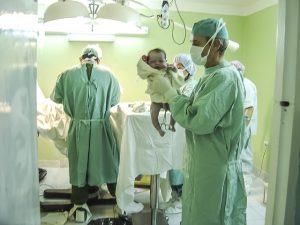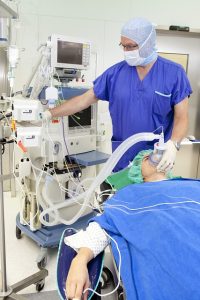As a student of medicine, one of the first things you learn is that there is always more for you to learn. The field of medicine is constantly evolving. Every day, new scientific papers are published in medical journals, providing novel insights that have the potential to revolutionize the way medicine is practiced in a wide range of fields. During your undergraduate education and medical school, you were probably exposed to much of this cutting-edge research. Today, it is being put into practice.
Based on the latest trends in medicine, universities and medical centers all over the United States are creating residency and fellowship programs to train residents in new specialty areas. The application process for these programs is coordinated by the Electronic Residency Application Service (ERAS). Thus, the number of specialty areas and programs that are available through the ERAS application process increases each year. In 2018, new specialty areas were added for almost all program types and application cycles
Understanding the ERAS Application process
The Electronic Residency Application Service (ERAS) is the organization responsible for the coordination of medical residency and fellowship programs in the United States. Through the ERAS online portal, aspiring medical residents and fellows can prepare and submit applications to the programs of their dreams — including newly added programs that provide training in innovative specialty areas.
For prospective medical residents, there is one application cycle each year, which runs from June to September. The deadline for the 2018 ERA application process is September 6, 2017, so mark your calendar! For aspiring medical fellows, there are two application cycles each year. The deadline for the first cycle — which is the one used by the majority of fellowship programs in the United States — is in July. The deadline for the second application cycle is in December.
For the 2018 ERAS application process, new specialty areas were added for each application cycle. Read on to learn more about the exciting opportunities that are opening up within the field of medicine.
MD Residency – September Cycle
As a foreign medical graduate looking to apply for a residency program in the United States, you have 50 specialty areas to choose from. The three most common specialties for foreign medical graduates are family medicine, internal medicine, and pediatrics, but for the 2018 process, there are also two new specialty areas that you might be interested in:
- Family Medicine / Osteopathic Neuromusculoskeletal Medicine
- Osteopathic Neuromusculoskeletal Medicine
MD Fellowship – December Cycle
If you have already completed a U.S. medical residency program and want to specialize your training through a fellowship program, there are 18 specialty options available for the December cycle. Five of them are new this year, including several that might be of interest to foreign medical graduates who have completed residency programs in the popular specialty areas of pediatrics and internal medicine.
- Advanced Heart Failure and Transplant Cardiology
- Clinical Cardiac Electrophysiology
- Gynecologic Oncology (Obstetrics and Gynecology)
- Maternal – Fetal Medicine
- Reproductive Endocrinology and Infertility
MD Fellowship – July Cycle
Most aspiring medical fellows submit their applications to the ERAS during the July cycle, in which 46 specialty areas are offered. Although the July deadline has already passed, it can still be helpful to be aware of the newly added specialty areas, in case you plan to apply in the future. Most of this year’s additions are in the increasingly relevant field of clinical informatics. Several are ideally suited to foreign medical graduates who have completed residencies in one of the three most popular residency specialty areas:
- Clinical Informatics (Family Medicine)
- Clinical Informatics (Internal Medicine)
- Clinical Informatics (Pediatrics)
- Clinical Informatics (Pathology)
- Clinical Informatics (Emergency Medicine)
- Clinical Informatics (Anesthesiology)
- Adult Congenital Heart Disease
Preparing for a Residency or Fellowship in a New Specialty Area
For aspiring medical residents, it can be a challenge to prepare for a residency in a newly created specialty area. But remember — all of the other applicants are in the same boat! If your academic interests lie in one of the new fields, make sure to provide a full explanation in your personal statement, which is the part of your application where you get to tell the application reader about your career goals. In addition, the physicians who write your letters of reference may also be able to speak to your interest in the subject.
Before you apply for a residency, you might also consider completing a graduate externship program that is related to the new specialty area that you are interested in. For instance, if you are considering applying for a residency in Family Medicine / Osteopathic Neuromusculoskeletal Medicine in the future, an externship in Family Medicine or Neurology could look great on your CV. Similarly, if you one day hope to do a fellowship in Advanced Heart Failure and Transplant Cardiology, a clinical externship in Cardiology, Interventional Cardiology, or Metabolic Cardiology could be a great experience.
Need more help with the residency application process? FMG Portal offers clinical externships and other resources that can help foreign medical graduates get matched. Contact us today for more information!







